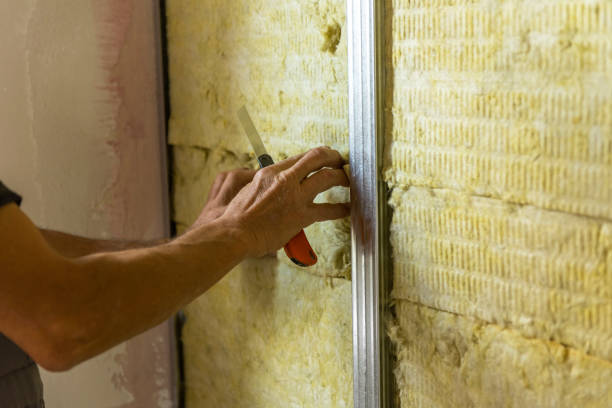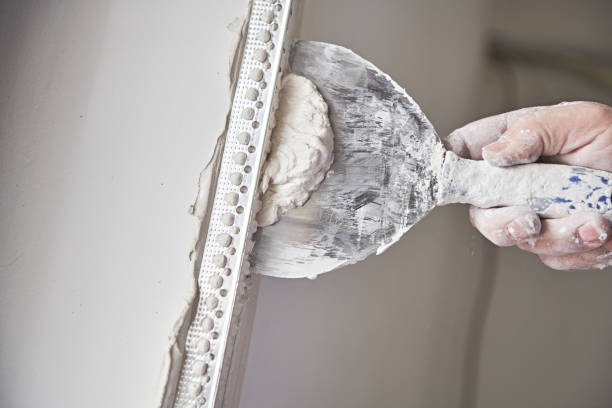The Art of Drywall Installation: Denver's Professional Insights
Are you tired of lackluster walls and subpar finishes? Look no further, because when it comes to the art of drywall installation, Denver's professionals have got you covered. They possess a wealth of knowledge and experience that can transform your space into a masterpiece. From the importance of proper preparation to insider tips for efficient installation, these experts have the skills to achieve smooth and seamless finishes that will leave you in awe. But that's not all – they also have the expertise to troubleshoot common challenges that may arise during the process. So, if you're ready to elevate your space to the next level, buckle up and prepare to discover the secrets of Denver's drywall installation professionals.
Key Takeaways
- Preparation is key: Before beginning any drywall installation, it is crucial to clean the work area, inspect for any structural issues, and measure and cut the drywall sheets accurately. This ensures a smooth and successful installation process.
- Choose the right type of drywall: Different types of drywall are available for various purposes, such as standard drywall for most residential applications, moisture-resistant drywall for high humidity areas, fire-resistant drywall for improved fire protection, soundproof drywall for noise reduction, and impact-resistant drywall for durability. Understanding these options helps in selecting the appropriate drywall for the specific project.
- Master the techniques for a smooth finish: Properly taping and mudding the seams between drywall panels, feathering the edges of the compound for seamless transitions, and sanding the dried compound with fine-grit sandpaper or a sanding sponge are essential techniques for achieving a professional and smooth finish. Additionally, removing dust from the surface before applying paint or primer and using high-quality products contribute to a flawless outcome.
- Troubleshoot common challenges: It is important to check the framing behind the drywall for any unevenness, use a level to identify dips or bulges in the wall, and address framing issues and irregularities with shims or joint compound. Using a drywall sander to smooth out rough spots or uneven areas is also crucial. By troubleshooting these common challenges and employing the right techniques, a professional finish can be achieved.
The Importance of Proper Drywall Preparation
Proper drywall preparation is essential for a successful installation and a polished finished look. Before you begin the installation process, it is crucial to ensure that the work area is clean and free from any debris. This includes removing any old wallpaper, paint, or loose plaster that may hinder the adhesion of the drywall.
Next, it is important to inspect the walls for any structural issues or damage. This could include cracks, holes, or uneven surfaces. Addressing these issues before installing the drywall will prevent future problems and ensure a smooth and seamless finish.
Once the walls are clean and structurally sound, it is time to measure and cut the drywall sheets. Accurate measurements are vital to ensure a proper fit and minimize wastage. Use a utility knife to score the drywall along the measurements, and then snap it along the line. Smooth out any rough edges using a drywall rasp or sandpaper.
Before installation, it is recommended to prime the drywall with a coat of primer. This will help the drywall to adhere better and prevent moisture absorption, which can lead to mold or mildew growth.
Understanding the Different Types of Drywall
There are several different types of drywall that you should familiarize yourself with before beginning a drywall installation project. Each type has its own unique properties and is designed for specific purposes. The most common type is standard drywall, which is suitable for most residential applications. It is affordable and easy to work with, making it a popular choice for homeowners. Another type is moisture-resistant drywall, which is ideal for areas with high humidity such as bathrooms and kitchens. This type of drywall is formulated to resist mold and mildew growth. Fire-resistant drywall is another option, offering improved fire protection. It is made with special additives that help delay the spread of flames in case of a fire. Soundproof drywall, on the other hand, is designed to reduce noise transmission between rooms. It contains multiple layers of gypsum board and sound-dampening materials. Finally, there is also impact-resistant drywall, which is more durable and resistant to dents and dings. It is commonly used in high-traffic areas such as hallways and corridors. Understanding the different types of drywall available will help you choose the right one for your specific project and ensure a successful installation.
Mastering the Techniques for Smooth and Seamless Finishes
To achieve professional-looking results, it is crucial to master the techniques for achieving smooth and seamless finishes when installing drywall in Denver. One of the most important techniques is properly taping and mudding the seams between drywall panels. This involves applying joint compound over the seams, embedding paper or mesh tape into the compound, and then applying additional layers of compound to create a smooth surface. It is essential to feather the edges of the compound to ensure a seamless transition between the taped area and the rest of the wall. Another important technique is sanding the dried compound to achieve a smooth finish. Use a fine-grit sandpaper or a sanding sponge to gently sand the surface, being careful not to sand too aggressively and damage the underlying drywall. After sanding, it is important to remove all dust from the surface before applying paint or primer. A thorough vacuuming or wiping with a damp cloth can help ensure a clean surface. Finally, applying a high-quality primer and paint will further enhance the smoothness and seamless appearance of the finished drywall. By mastering these techniques, you can achieve professional-level results and create a flawless finish when installing drywall in Denver.
Insider Tips for Efficient and Effective Drywall Installation
Make your drywall installation in Denver more efficient and effective with these insider tips.
- Plan and Prep: Before starting the installation process, take the time to plan and prepare. Measure the space accurately and create a detailed layout to minimize waste and ensure a precise fit. Additionally, gather all the necessary tools and materials beforehand to avoid interruptions and delays.
- Handle with Care: Drywall is delicate and prone to damage. Handle it with care to prevent cracks or dents. Use caution when transporting, cutting, and hanging the drywall sheets. Consider using a drywall lift to safely position the sheets, reducing the risk of accidents and injuries.
- Seam and Sand Strategically: Achieving a smooth and seamless finish requires careful attention to the seams. Apply joint compound evenly and feather the edges to blend them seamlessly with the rest of the wall. After drying, sand the surface lightly to remove imperfections and create a flawless result.
- Optimize Efficiency: Work systematically to optimize efficiency. Start by installing the ceiling first, then move on to the walls. Use a team approach if possible, with one person cutting the sheets and another person installing them. This division of labor can significantly speed up the process.
Troubleshooting Common Drywall Installation Challenges
A common challenge that arises during drywall installation is ensuring a smooth and even surface. This is crucial because any imperfections or unevenness can be easily noticed once the walls are painted or finished. To troubleshoot this issue, start by checking the framing behind the drywall. Uneven studs or structural issues can cause the drywall to appear wavy or uneven. Make sure to correct any framing issues before proceeding with the installation. Additionally, using the right techniques and tools is essential for achieving a smooth finish. One technique is to use a level to check for any dips or bulges in the wall before installing the drywall. If you notice any irregularities, you can use shims or joint compound to correct them. Another important tool is a drywall sander, which helps to smooth out any rough spots or uneven areas after the drywall has been installed. By addressing these common challenges and using the right techniques, you can ensure a professional-looking finish for your drywall installation project.
Conclusion
So there you have it, Denver's professional insights on the art of drywall installation. By properly preparing the drywall, understanding the different types available, and mastering the techniques for seamless finishes, you can achieve efficient and effective results. Remember to troubleshoot any common challenges that may arise. With these insider tips, you'll be well-equipped to tackle your next drywall installation project with confidence. Happy renovating!



